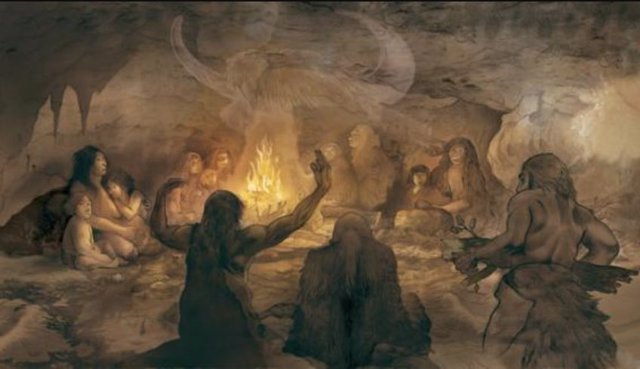Jan. 26 () –
The Neanderthals who lived near Madrid 40,000 years ago used animal skulls as hunting trophies, which confirms that this species of hominin already had symbolic capacity.
This is stated in the article published by the magazine Nature Human Behavior on an analysis of skulls of large herbivores found in the Cueva de la Des-Cubierta site, located in Pinilla del Valle (Madrid).
The investigation, which began fourteen years ago, focuses on the Neanderthal site that was discovered in 2009. “La Cueva Des-Cubierta is a long gallery of caves with fallen ceilings, that is, it does not retain its original cover, in the that An exceptional set of skulls of large herbivores has been recovered, some of them associated with small fires.“, has clarified the geologist from the Complutense University Alfredo Pérez González.
All the skulls in this hunting sanctuary, including those of bison (Bison priscus), aurochs (Bos primigenius), deer (Cervus elaphus) and two rhinos of the species Stephanorhinus hemitoechus, they were prepared by the Neanderthals following the same pattern: they removed the mandible and upper jaw, consuming the brains and leaving the part of the skull with the horns or antlers as a hunting trophy, according to the investigation, in which the CSIC researcher at the MNCN (Museum of Natural Sciences of Madrid) David Martín-Perea.
“An important fact is that we have been able to verify that the activity was maintained over at least several generations, which introduces the concept of cultural tradition that would have passed from generation to generation,” he explained. it’s a statement the paleontologist from the Complutense University Juan Luis Arsuaga.
Along with these skulls, Mousterian stone tools, typical of Neanderthals, appeared, as well as anvils and the hammers used to fracture them. For the researcher from the University of Valladolid Enrique Baquedano: “This behavior of the Neanderthals from a little over 40,000 years ago not related to subsistence activities but rather with others that provide information on aspects that are quite unknown to this species of hominin”.
“Until now, our species had been considered the only one with the ability to attribute concepts to symbols, a theory that, based on these findings forced to share that intellectual attribute with the Neanderthals“, Baquedano pointed out.
Until now there is no other archaeological site in the entire territory through which the species Homo neanderthalensis was distributed similar to that of Pinilla del Valle. The findings of the Cueva Des-Cubierta make it an exceptional place that is allowing us to unravel the keys to the behavior of this species that lived with Homo sapiens.
“This study opens doors to a new concept about this species of hominin and questions our role as the only sapiens in the evolution of life on the planet“, stressed the expert.
Since the investigation began in 2002 by the current investigation team in the Calvero de la Higuera de Pinilla del Valle, an archaeological zone protected as a Site of Cultural Interest (BIC), every summer, for at least one month, the excavations that have made it possible to account for this finding are carried out.













![[Img #73262]](https://thelatestnews.world/wp-content/uploads/2024/07/The-era-of-artificial-intelligence-in-digital-marketing-in-Spain-300x200.jpg)